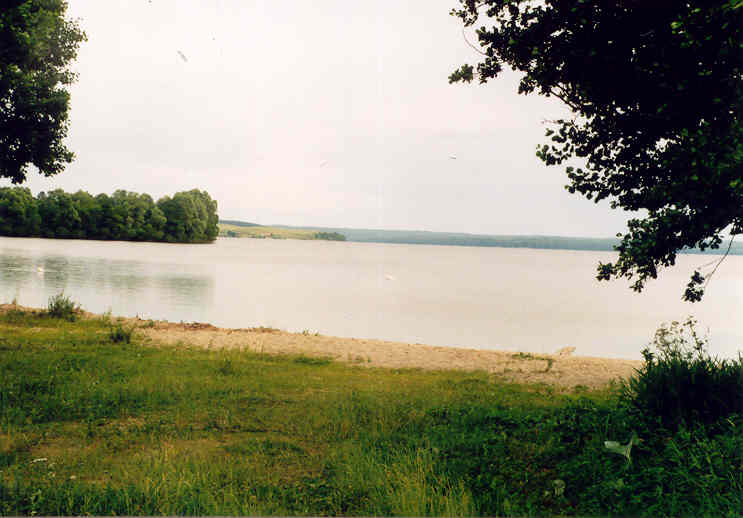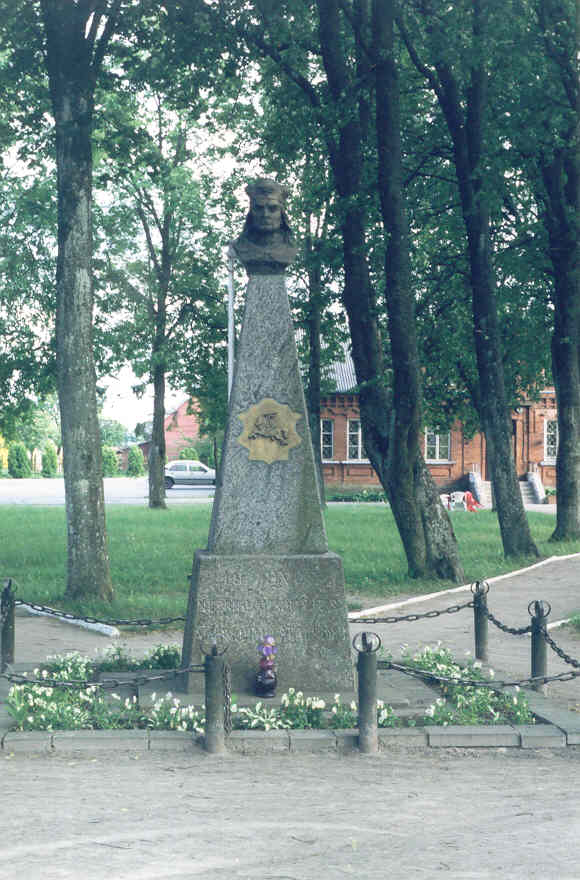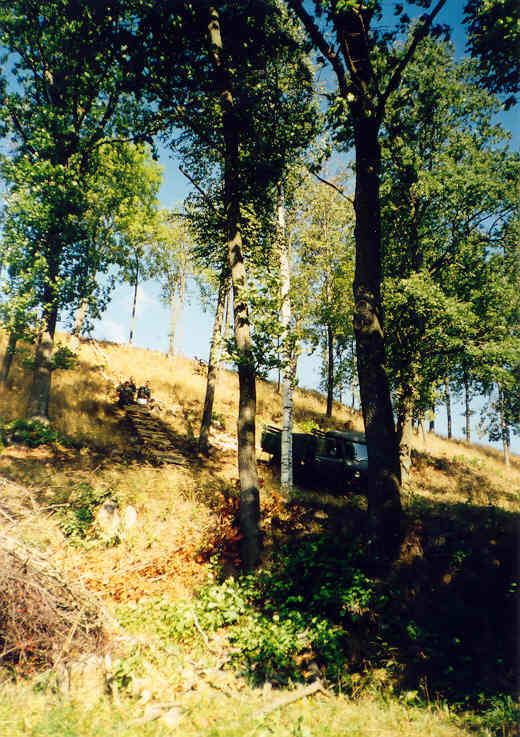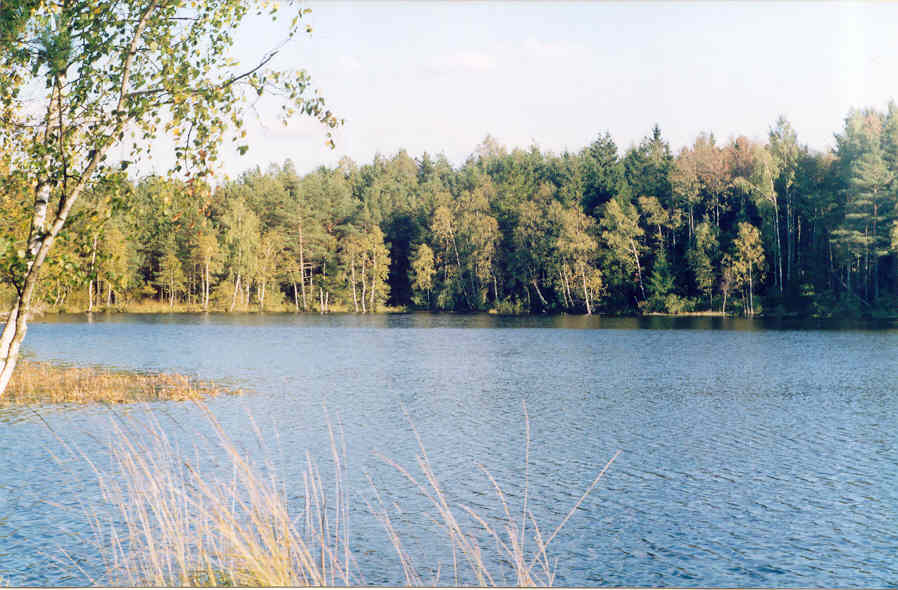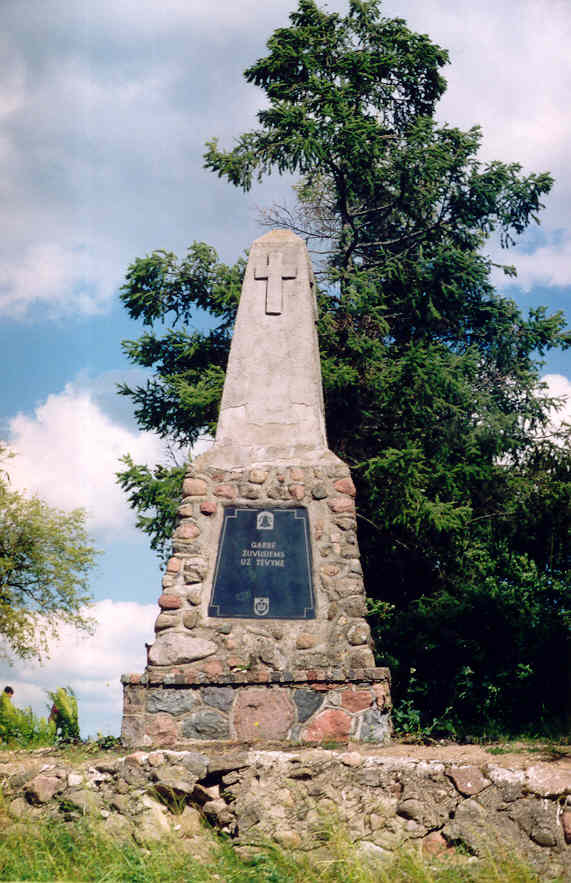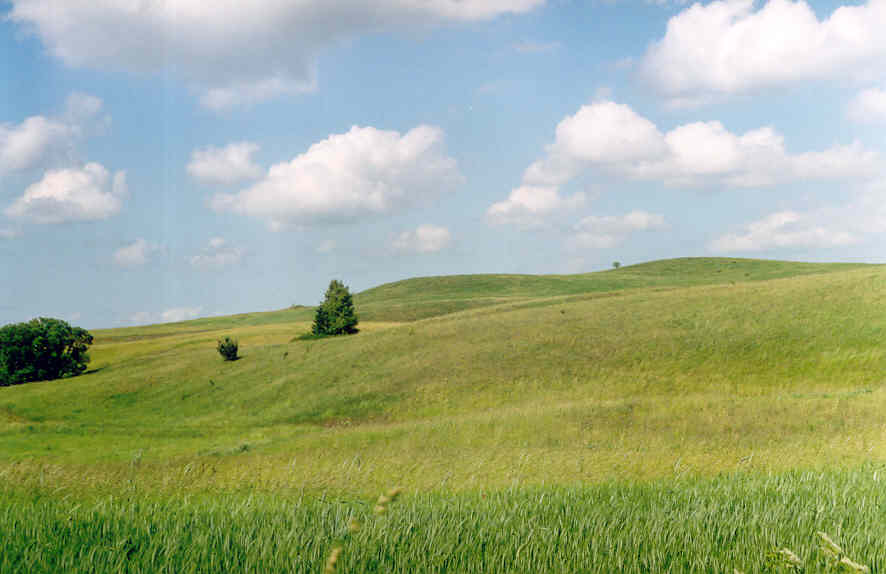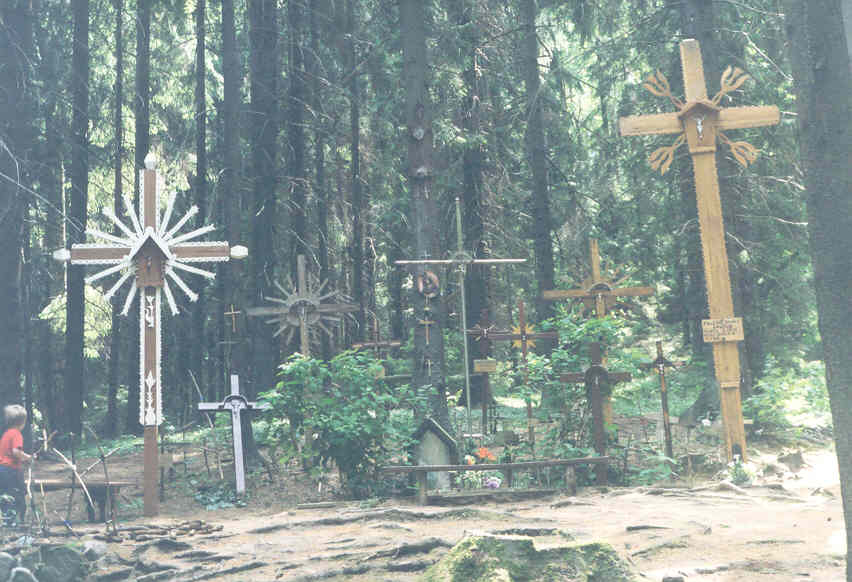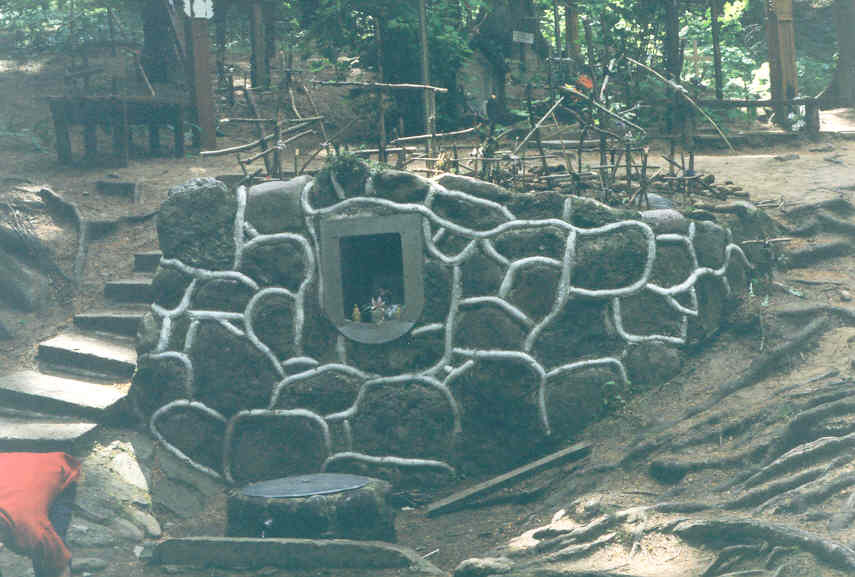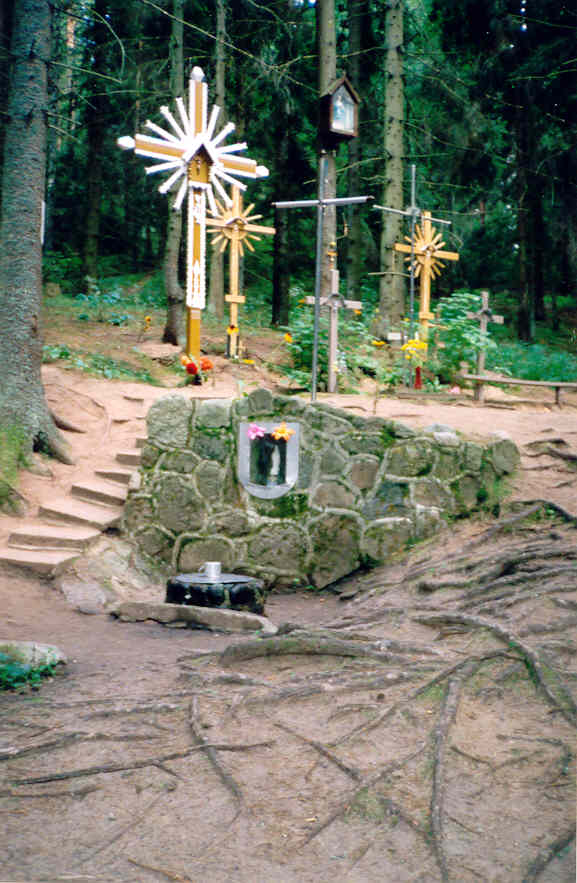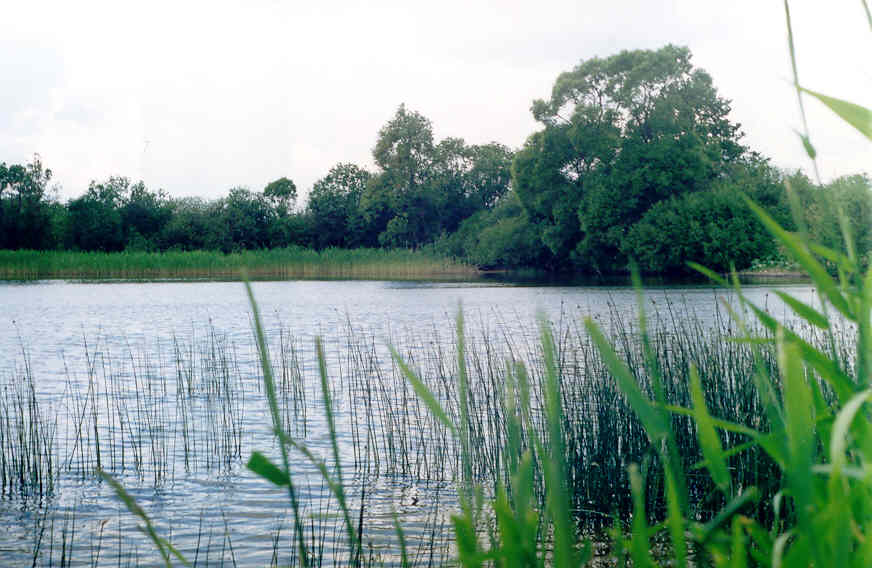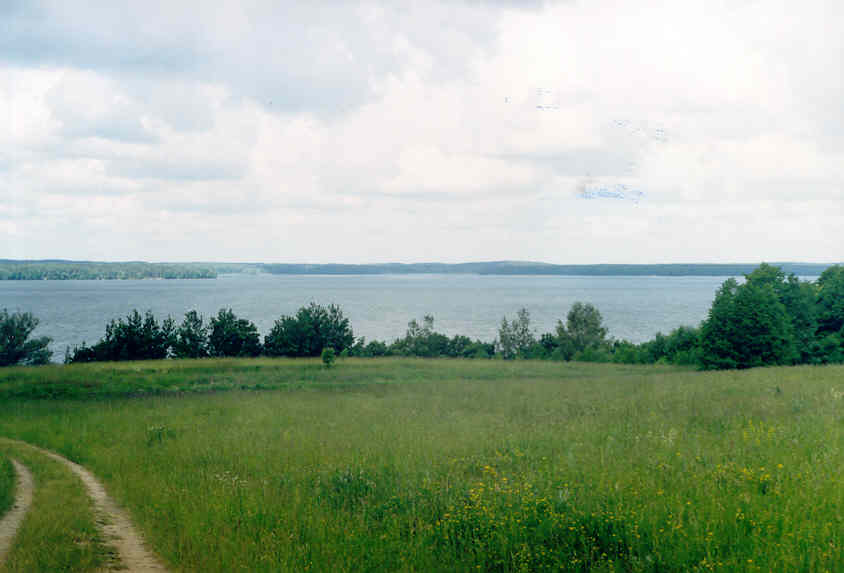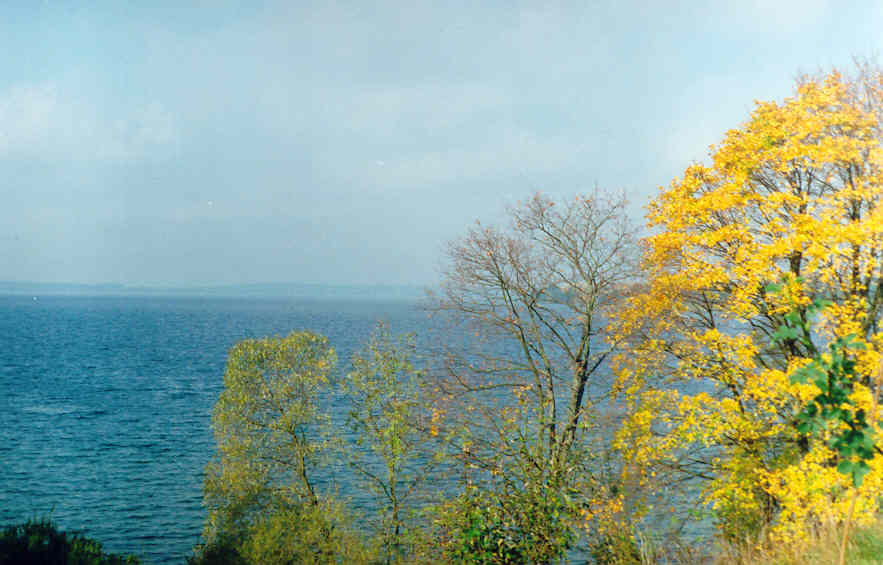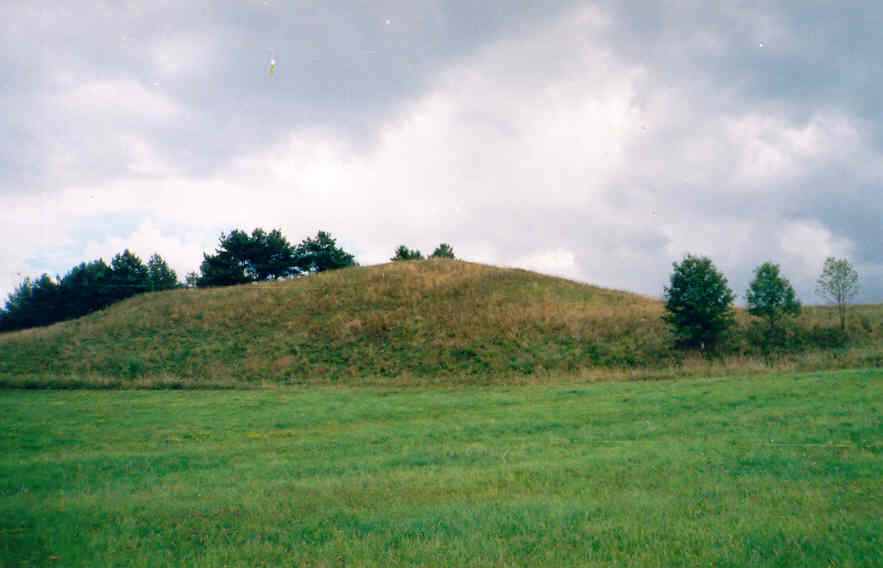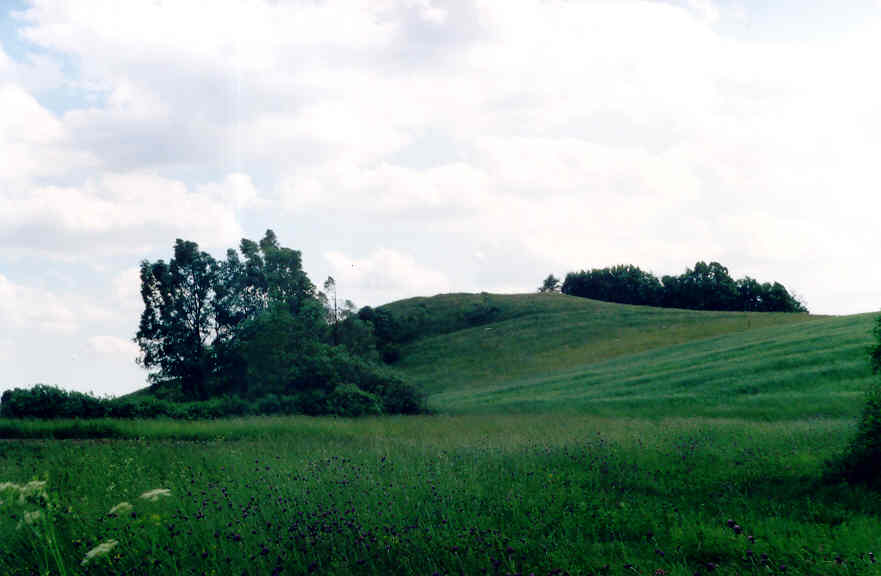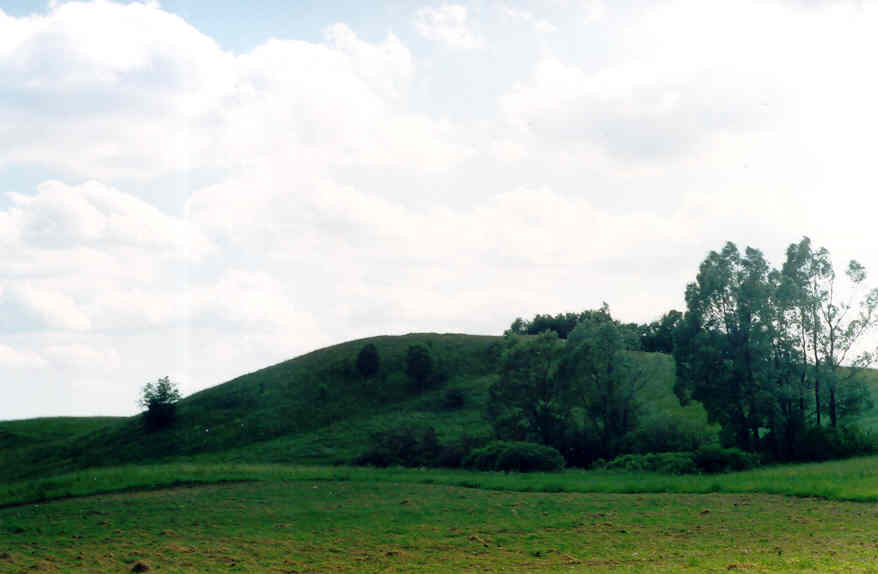The Vi�tytis Regional Park covers the area of 10,1 thousand hectares in southwestern part of Lithuania, bordering with the region of Karaliau�ius in the west and Poland, in the south.
The lakes of the park reflect all the diversity of water flora, starting from dystrophic marshy lakes, containing scarce and poor flora (lakes Ber�inis and S�rinis) and eutrophic lakes Pakalnis and �akiai, finishing with meseutrophic lake Vi�tytis.
MONUMENT FOR INDEPENDENCE
Thanks to the efforts of rev. Kazimieras Montvila, former priest of the Vi�tytis parish, 1988 saw the reopening of the Monument for Independence. The background story is interesting. On the break of the WW I, the Russian army was driven further towards the East. A German general, cherishing hope to stay here as a landowner, planted the town square with trees, and in the centre, put a stone obelisk, decorated with an Eagle. After the Lithuanian independence was proclaimed, about 1927 the obelisk was used as the base for the monument of Independence. The eagle was replaced by the state symbol of Lithuania; it was topped with the head of Vytautas the Great, and on its sides it carried bas-reliefs of A. Smetona and J. Basanavi�ius.
MONUMENT FOR VI�TYTIS
In 1570 �ygimantas Augustas granted Vi�tytis with Magdeburg town rights, and by doing so he converted the village into a town. Vi�tytis was given a town stamp and coat of arms, depicting a unicorn. In 1990 Vi�tytis town celebrated its 420 anniversary. The event was perpetuated in a monument, erected at the entrance to the town.
THE GREAT STONE OF VI�TYTIS
It is the third largest stone (after Puntukas and Barsty�i�) in Lithuania, lying on the right side of the road Vi�tytis-Kybartai, 1 km away from Vi�tytis.
In 1964 this stone was declared a monument of nature and archeology. This gigantic granite irregular -shaped boulder is of glacial origin. It is 7,2 m in length, 5,7 min width and 3,7 m in height. There is a hollow on top, called "devil's foot". The stone looks quite mysterious. Seen from the roadside, it looks like a body of a gigantic animal, with a sagged spine and immense head, large eyes and protruding nose.
It is assumed that this stone might have served as a pagan sacrifice place. It was also called a stone of holly trinity, according to the records in the church documents of the XVIII century.
There are various presumptions and legends circling round the stone. One legend has it that a devil sat on the stone and shed tears. Water in the top hollow, is sometimes called "devils tears", which allegedly possess healing powers, especially for eyesight failure.
Others see the print of a bare foot. It is claimed that the stone cannot be crushed: stone crushers have frequently attempted splitting it (metal poles in the stone witness the attempts), to no avail. It is believed that the stone hides treasure: it is said that a group of Frenchmen once came to look for the treasure, however there is no record whether they were successful.
Locals have several legends to tell:
Legend I
Long time ago, a tiny town called Torn was founded in a secluded place in Lithuania. There were no lakes, hills or stones around, but vast areas of pastures. The town was spread all over the hill, with an old and cripple church on the top . Once the oldest woman in the town had a dream: a devil is to take away a lot of souls from the town. Having heard the story, the locals decided to build a new church. When the church was about to be finished, the news reached the Devil himself. He was enraged and started scheming a revenge action. He set out to Anyk��iai to ask stone Puntukas for assistance. Stone Puntukas gave him his son Puntuk?lis, and the Devil returned with Puntuk�lis in his pocket.
Approaching Torn, he took the stone out of his pocket and was about to complete his plan. Unfortunately, a rooster crowed , scaring him so much, that he dropped the stone and dashed away and in doing so he left deep footprints on the ground. It was then that Torn environs became hilly and full of stones.
The town acquired an enormous stone called Puntuk�lis. People tried to stay away from it, as they thought that the Devil would come every night to reflect on his unsuccessful deed. In the end, St. Mary, feeling sorry for the people of the town, came down on the stone making it clear and holy. It deterred the Devil, and he never dared to approach it. His revenge to the people of the Torn was limited to flooding the pastureland with water, which shaped into an enormous lake.
Legend II
The devil became angry with Vi�tytis and decided to destroy the church. Late at night, carrying a big stone, he set out to complete the task. However, upon a rooster's crow at midnight, he dropped the stone down on the ground. Since he intended to continue his pursue next night, he decided to mark the stone to be able to tell it from other stones in the field. Thus, he left his footprint on the stone (today called "devil's foot"). However, since he had other things to do, he soon forgot about the stone and never returned.
DABRAVOL� MOUND
The Dabravol� mound with an ancient settlement is in the village of Dabravol�, distanced 5km from Vi�tytis. The territory of the archeological monument includes a mound and an ancient settlement at the western foot of the mound. The total area, including the protection zone, covers 1.6 hectares.
NATURE RESERVES
There two nature reserves in the Regional Park of Vi�tytis: Drausgiris and Grybingiris. The approximate area of the reserve is 204 hectares. The reserve was established with the view of preservation of oak woods with the diversity of flora and fauna (including very rare species), typical of S�duva highlands. 1998 the nature reserve saw a botanic research carried out. As an outcome, 408 flora species, belonging to 76 families, established. The territory under observation sheltered 17 varieties of plants, entered into the Red Book, which contains all the species on the verge of extinction. Due to their unadulterated character, the flora and fauna of the reserve are of vital importance from the botanic and environmental point of view. Furthermore, the exploration revealed 106 varieties of moss (14 varieties of lichen moss and 92 varieties of leave moss).
PAVI�TYTIS MONUMENT IN COMMEMORATION OF FIGTERS FOR LIBERATION
A newly renovated monument to commemorate the fighters for the liberation of Lithuania was opened in the heart of Pavi�tytis settlement in November of 1993.
PAVI�TYTIS MOUND
An archeological monument, which is 1 km away from the village of Pavi�tytis and 120 m from a nameless lake in the northern part. The mound is a genuine hill with gradually sliding northern and eastern slopes. At some points of the top of the mound one could see the remnants of trenches. No habitat layer has been found, although legend has it that the mound has a church engulfed, and one can hear it bell on Easter morning.
HOLLY SPRING
There is no record about the origin of this holy place with the spring �ilelis and a cross, but older people tell the following story with this regard:
On the threshold of the WWI a poor peasant had a dream about st. Mary telling him to put a cross at the spring. The poor peasant conveyed the dream to his wife, complaining about his inability to complete such a task due to the lack of the basic things needed, such as carriage and horses. The only thing he had was an axel. Some time later he saw Mary in his dreams again. She insisted on his making and putting the cross at the spring. Again, the peasant complained to his wife and felt miserable for being unable to fulfill God Mother's request. When he saw Mary in his dreams for the third time, she was pleading him in agitation. The peasant was so frustrated and confused that he went to his neighbor for help. They both went to the forest, cut an oak tree and soon the task was completed.
The local, realizing that all this entailed God's power, started frequenting the place for prayers and holy water. Miracles happened, especially in connection to eyesight failures.
The cross had lasted to the WWII, and then gave way to a new one, made during the German occupation.
According to the tales, the spring water was really miraculous. No sooner the blind eyes were touched with this water, the eyesight was recovered for good. It also healed hopelessly bad injures. But an unfortunate thing happened on day, when a czar soldier washed his horse, suffering from scabies. Since that moment, the spring has lost its healing power. Nevertheless, even nowadays one can occasionally hear about miraculous healings in connection to this spring. Many people still believe that the spring posses healing power.
PRECIPICE
People call this sandy cliff face a precipice. Hill slopes have various degrees of declivity. The place is the favorite with holidaymakers. The fact that it faces the south, and has a good access to a clean lake makes it very favorable for sunbathing.
LAKE VI�TYTIS
It is one of the largest lakes in Lithuania covering 1660 hectares which makes it the fourth largest lake in Lithuania. Vi�tytis lake with its tributaries belongs to the basin of Prieglius.
It is 8,5 km in length and 4,2 km in width at the widest point. The deepest place reaches up to 50 m. Vy�aina, the largest river of the Prieglius basin flows into lake Vi�tytis.
"Vi�tytis" is a diminutive form for the word "chicken". The name is very old; its written record goes back as far as XIV century, when the names Dvystytz, Wystiter See were entered in crusaders' chronicles.
Legends are as follows:
Once upon a time, lake Vi�tytis approached a spectacular plain or a big Mandab�rija town in the form of a cloud and descended there, when a passer by happened to mention the word "vi�tytis", and by doing so accidentally guessing the name of the lake. Other stories have it that the lake flowed in and continued to flood till somebody pointed at the chicken nearby and uttered the word "vi�tytis", which stopped the lake expansion.
The most popular plot line is about the warning coming from a chicken, old man, invisible man or noise under the ground, about the lake approaching. Some of horse herd watchers ran away, others did not and stayed where they were and suddenly were engulfed by the water coming from the ground.
The legends claim that Vi�tytis will rise and go away some day (it tried to rise twice).
One written legend has it that a church was engulfed by the lake and people would occasionally hear the bells ring.
Another legend tells, that the lake came from the Blue Sea. Some people claim it having descended from the clouds, other say it gushed out from the ground. Opinions differ, but the only thing they all agree is that the air howled and squeaked and cheeped all through the night. The morning saw the plains, flooded with water. When the water still continued to produce the sounds, a little girl noticed that the water cheeped like a chicken, and suddenly all the noise stopped, however the girl went blind.
VI�TYTIS MOUND
The mound is 2 km to the south from the road Vi�tytis-Kalvarija, and 2km to the east from the eastern bank of lake Vi�tytis. It is a secluded hill in the field The mound was prospected by the History Institute of the Science Academy in 1962. The relicts discovered were taken into the custody of the Museum of History and Ethnography in Vilnius.
The Vi�tytis mound opens spectacular vistas. Once upon a time in the place of the current mound there was a manor, which had a tall fence and a beautiful garden.
The manor was the property of a cruel landowner, whose name was Kakeraitis. Serfs, young and old equally, were punished and killed for a minor offence. The landowner had three daughters, the most attractive of which was Pile. People were dazzled by her extraordinary beauty. One of the serfs fell in love with the beautiful girl, so did the girl. The name of this handsome man was Mindaugas. Many men attempted friendship with the girl, however her heart was attracted by Mindaugas.
When her father discovered the news, he got enraged and started scheming a plan of revenge. He ordered his executors to whip the boy to the death, which they did. Then the father told to burry him without any traces left. When Pile found this out, she broke into tears and at night went to look for the grave. On finding it, she decided to make an eternal grave for Mindaugas.
She spent time weeping during the day and carrying sand in her apron during the night. People noticed a miraculous growth of the grave. Pil�, upon completion of the task, died. Since then the hill has been called Pile's hill or Piliakalnis (mound).
